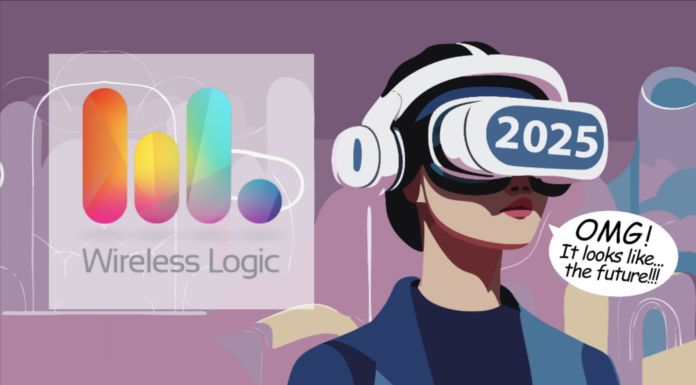The internet of things (IoT) continues to grow apace as more industries connect devices for commercial and operational reasons. Transforma Insights forecast global IoT connections to land at 18.2 billion this year, with a projected rise to 20.4 billion next. It is a linear growth pattern and manufacturing, healthcare and energy are among those getting onboard. Their applications, such as robotics, sensors and metering, are wide and varied as are their options for connecting devices for data exchange.
What do they, and all enterprises, need to know for the growth of IoT to continue in 2025? Will events impact innovation and growth, positively or negatively? Three opportunities and challenges spring to mind, as follow…
1 | Network profiles will be downloaded when devices are in place

In 2023, the GSMA unveiled a new standard supporting remote SIM provisioning (RSP). It is SGP.32 and it will stimulate take-up of eSIM, which in turn will popularise downloading and activating cellular network profiles when devices are in place.
eSIM, of course, enables more flexibility because enterprises needn’t be locked into the choices they made pre- IoT deployment. They can provision network profiles over-the-air and select or change SIM profiles to, for example, take advantage of improved uptime performance or resolve regulatory blockers such as permanent roaming restrictions or charges.
There are manufacturing and distribution benefits too. An eSIM means enterprises can assign a single stock keeping unit (SKU) to a product family, regardless of where products are deployed in the world. This makes stock management and distribution processes simpler – and therefore cheaper. Our estimates suggest SKU rationalisation can save enterprises up to 30% of manufacturing, logistics and support costs.
SGP.32 isn’t the only reason eSIM will start to take off in a bigger way than it has to date. iPhones released in the US since iPhone 14 are eSIM only and don’t have a SIM slot (internationally outside of the US, iPhone is dual-SIM – nano and eSIM – at the time of writing). The eSIM-only trend will continue into tablets, routers and gateways; it makes so much sense from a space, power and security perspective for the same to happen with IoT devices.
This trend, together with SGP.32 which converges consumer and business RSP approaches, will propel more mobile network operators (MNOs) and mobile virtual network operators (MVNOs) to produce downloadable network profiles.
2 | 2G/3G network shutdowns will expose SMS-based applications
2G/3G network shutdowns will expose misconfigured 4G devices. The 2G and 3G shutdown has been happening for some time, albeit at a different pace around the world. European enterprises should learn important lessons from the USA, where both are already shut down. Those sunsetting events led to issues in many devices despite the fact that they were 4G capable.
The issues were two-fold. Firstly, devices have a setting to dictate whether they are ‘voice centric’ or ‘data centric’. Whilst a device may never be used for voice, in many cases the voice centric setting was left by default in the device configuration. What this tells the device is to perform a combined network attachment procedure – connecting at a signalling level to 2G/3G and 4G bearers.
When the network only offers a 4G service, many of these devices went into a connection loop where the unit was looking to connect to a voice capable network on 2G/3G due to the voice centric setting. Devices in a data centric configuration did not suffer the same issue as their functional objective was fulfilled by the 4G network and service immediately granted.
A second related issue exists with devices that support 4G data services but also require an SMS function. In a normal 2G/3G/4G bearer configuration a device will use 4G for data, but if SMS is needed it will step back to 2G/3G to fulfil the short message activity. Once 2G/3G are no longer available, traditional SMS mechanisms become unavailable at the same time.
4G networks do support SMS but in a different mechanism of SMS over diameter (SMS over SGd). In order to send and receive SMS in this way the core network provider, the visited network, and the device itself must be able to support it.
Enterprises with IoT devices supported by 4G could be forgiven for thinking this isn’t going to impact them. That could be the case, but where SMS is concerned 4G services require SMS over Diameter functionality. The sticking point is that SMS over Diameter is not necessarily supported by default by all core/connectivity network providers.
Suffice to say, enterprises must continue to be vigilant to network sunsetting developments. If they are impacted, they need to plan migrations of their IoT deployments in good time.
3 | MVNOs will differentiate around value-added services
MVNOs that evolve their offerings to meet the growing need for value-added services, including security, a globally distributed network and software components, will prosper in an increasingly crowded market.
Enterprises want actionable data, not IT projects. This is evidenced by Wireless Logic research with Kaleido Intelligence which reveals that almost half (49 percent) of cellular IoT adopters expect connectivity providers to offer professional services for software and application design, almost four in ten (39 percent) are looking for an application enablement platform and 37 percent expect application hosting services.
On security, the same research tells us that a huge 88 percent of all respondents (IoT adopters and non-adopters) expect connectivity providers to offer tools for monitoring device traffic, while almost half (47 percent) of cellular IoT adopters expect network threat detection and mitigation services.
IoT deployments are often complex, and the market offers enterprises a range of connectivity providers and options.
Clearly, MVNOs will need to show them they can solve more pieces of the puzzle to win and retain their business.
A bright future
The IoT offers so much opportunity for enterprises to broaden their access to data to better serve customers and streamline their own operations. It is a fast developing and evolving area, one influenced by industry trends, technological advancements, regulation and more. Whatever 2025 does bring, IoT has an exciting and, no doubt, bright future.

